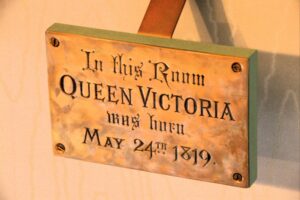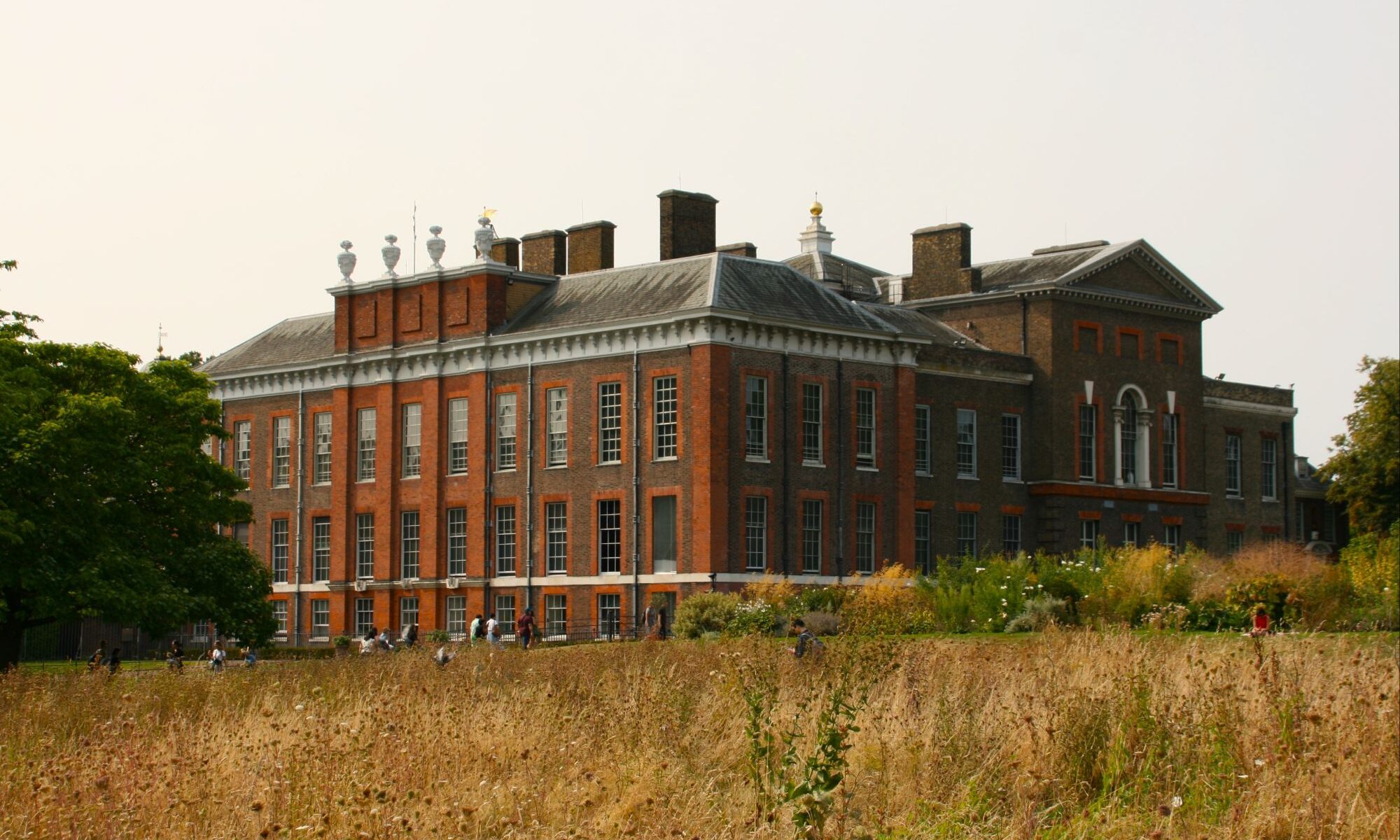On a late summer’s Sunday, we took the opportunity to expand our knowledge and view of London’s landmarks by ticking another off our ‘must see’ list. Kensington Palace is a lesser-known building than some of the city’s more iconic ones. It is the second royal residence in London behind Buckingham Palace.
Kensington Palace clearly lacks the pomp and circumstance associated with other royal residences of the land. There are no red coats at the gate, or visible police presence protecting a so-called palace. We can only recall the odd statement from a palace security guard warning of pickpockets!! Our visit seemed slightly surreal as autumn seemed ever closer there was a real warmth and friendliness amongst the crowds of people wandering the palace and grounds. It certainly drew more of a crowd than we were anticipating.
The palace is nestled on the outer western boundary of Kensington Gardens which are joined to Hyde Park. Some way from the central sights of London, it certainly is a long walk from central (downtown for you Yanks) London, however, we made the short walk from Paddington station. Upon arriving one sees a statue of one of our most famous monarchs, Queen Victoria. Her connection with this palace was our main reason for visiting. Queen Victoria was born and raised at the palace and this connection is shown throughout the first part of the residence.
We walked through the first set of rooms of the palace which are associated with Queen Victoria. They were bland and plain, though Victoria’s father thought differently when he wrote this in a letter on the day that she was born there, “The apartment could not have been more comfortable, calm, close to the town but with the view over the most magnificent park with a beautiful bit of water”. It is very hard to disagree with this opinion as the view from the window of ‘the pond’ is, indeed, beautiful. The modern metropolis that now surrounds the pond in the distance brings a different perspective from yesteryear. There is a plaque by a window on a wall that reads ‘In this room Queen Victoria was born May 24th, 1819’. By all accounts, Victoria had a very lonely and unhappy childhood through no fault of her own. She was manipulated and controlled by her mother’s partner and clearly out of favour with her uncle, the Prince of Wales, who effectively was king due to his father’s health and who became king George IV early the following year.
It is sad to think that Victoria was left hidden away here, and, even sadder, that this treatment was possibly a sort of punishment. Sir John Conroy was definitely a favourite of Victoria’s mother, Lady Flora Hastings. The potential was there for a young Victoria to become queen and Conroy realised this. Could it be that the introduction of ’The Kensington System Rules’, a set of strict regulations imposed on young Victoria, were designed to bring her under his control so that when she acceded the throne, he, in effect, had control of the Empire? Whatever his mindset we know that any such manipulation backfired on him for he was banished from the Royal household as soon as Victoria became queen. The rules are displayed on one of the walls for all visitors to see. Perhaps her closest friend during her childhood stay here was her furry friend Dash. Another couple of noticeable items on display are jewels (one of which was designed for Prince Albert as a gift) and a dolls’ house (which is a scale version of Kensington Palace). At around 0600 on the 20th June 1837, Victoria was woken to be informed she was Queen and to make her way to the Red Saloon to meet the Privy Council. The Red Saloon remains and houses a painting of that famous meeting.
After visiting the Palace, the main attraction for me became the state apartments. These certainly felt grander than the Victoria rooms. A visit allows one to explore and educate oneself on a period of our British monarchy’s history of which I was previously unaware. When William III and Mary II, who were our first and only joint sovereigns decided to move here, they purchased a Jacobean mansion formerly known as Nottingham House (built in 1605 by Sir George Coppin). At the time of purchase, it was a two-story Jacobean mansion and was clearly going to require some work. They instructed Sir Christopher Wren to complete works on this mansion and to enlarge it to become a palace. Sir Christopher decided that to save time and money, he would keep the original house intact and add three story pavilions at each of the 4 corners.
Mary II’s sister (Queen Anne) would go on to finish these works and make significant improvements to the gardens. This included the construction of the Orangery (now a restaurant offering elegant lunches or indulgent afternoon tea). The Queen’s apartments include a staircase, gallery, closet, dining room, drawing room & a bedroom. Compared to the King’s apartments they come across very bland and basic. The King’s apartments are, in our opinion, the most appealing part of the palace.
The penultimate monarch to fully live here (George I) spent lavishly on the palace. What is seen here is the staircase, the presence chamber, the privy chamber, the cupola room, drawing room and the King’s gallery. The staircase immediately attracts one’s attention upon entrance. This grand entrance is a must see and was painted by William Kent as a vivid recreation of George I’s court. The other room which is superb, splendidly decorated and worthy of admiration is the Cupola room. This was the work of William Kent and his first commission. On looking upwards, the fictive coffered dome with the centre piece of the Star of the Order of the Garter is seen. This beautiful room was home to lavish parties given by George II, but in 1819 the baptism of Princess Victoria also took place here.
Our tour of Kensington Palace was complete but as we left, we walked around the grounds as everyone can do without purchasing an entrance ticket. Maybe this is where those pickpockets lie in wait!!
Our impression is that the beauties of this palace are relatively unknown, but, in our opinion, is testament to 300 fascinating years of royal history. As palaces go, it did seem to come across as more of a home and most definitely when in the Victoria rooms. The Queen’s apartments stir up the thoughts of being in a palace, but it was the king’s staircase and cupola room that give this place its ‘wow’ factor.
As we left London again, it was with a slight spring in our step. Another summer has passed by and we have completed another fascinating, educational and inspirational visit that has more than satisfied our curiosity and we are encouraged to return to this great city for more visual treats by way of our further education.


